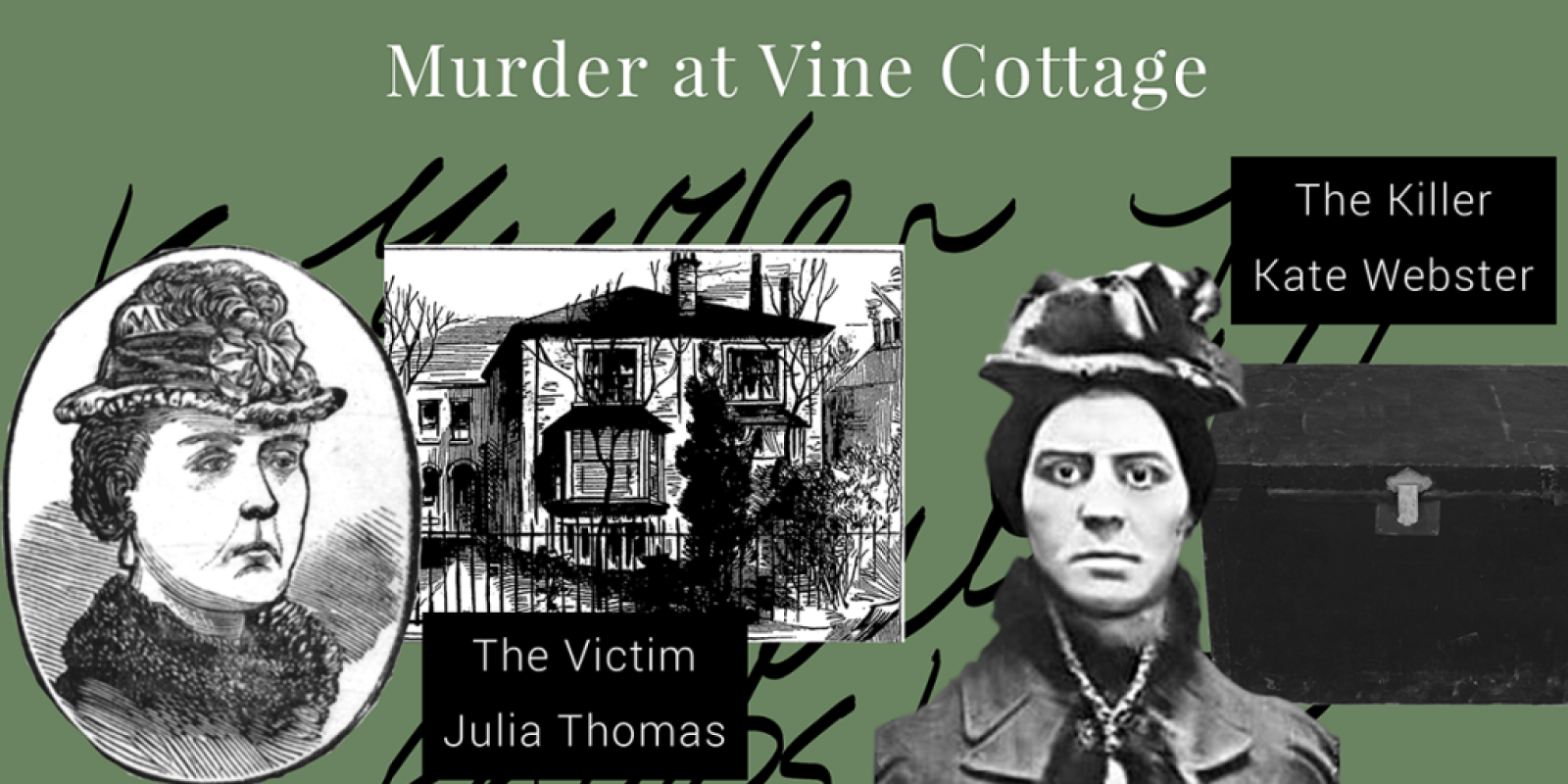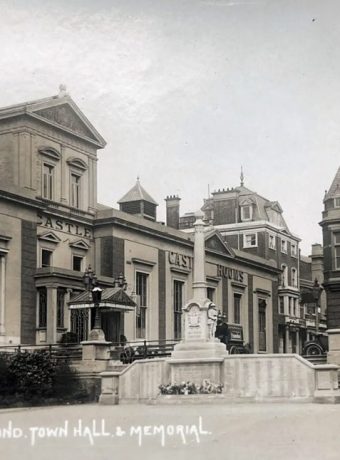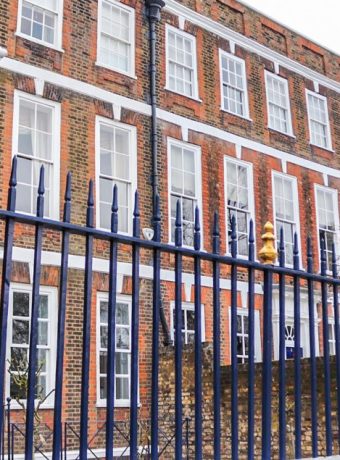Murder at Vine Cottage, Richmond
Richmond Borough officially boasts the lowest crime rate of any in Greater London. But don’t let the genteel façade fool you — behind the postcard-perfect charm lies a past steeped in sinister goings-on. One of the most gruesome murders of the Victorian era unfolded right here in leafy Richmond: the brutal killing of a retired schoolmistress by her maid, who then dismembered her body and scattered the parts. Some were fished from the Thames, and the story became a national media sensation.
Kate Webster was a lady’s maid by profession, but hardly a competent one. A lifetime of petty crime had kept her mostly behind bars since moving to England from County Wexford, Ireland, at 17. Her employer, Julia Martha Thomas, was a twice-widowed and highly religious woman who rented a smart, modest cottage on Park Road.
Julia, described by her doctor as “a small, well-dressed lady,” was also a devout member of the new Richmond Presbyterian Church on the Green. On a bleak January morning in 1879, Kate arrived at 2 Vine Cottages for an interview. Julia either saw potential or was desperate — she hired her on the spot. Some say that, as a lower-middle-class woman, she didn’t strictly need a live-in maid, but kept one for appearances.
Kate soon proved to be a liability. She was fond of the area’s many public houses, especially the Hole in the Wall — conveniently just a few doors down. Within weeks, Julia had had enough. She recorded in her diary:
“Gave Katherine warning to leave.”
(The Times, 31 March 1879, p. 11)
In what turned out to be a fatal gesture of goodwill, Julia agreed to let Kate stay a few more days to get her affairs in order. In return, Kate would work on Sunday, usually her day off. What passed between them before Julia left for evening service that Sunday remains unknown, but a witness later described seeing Julia at church:
“Her face was flushed, and her voice was shaking; she appeared to be in a state of very great excitement… she seemed vexed at something — she left about ten minutes before the end of the service.”
(Court transcripts)

Richmond Presbyterian Church, where Ms Thomas attended. Now converted into flats.
The Killing
When Julia returned home that night, it is believed Kate ambushed her, leaping from behind the bedroom door. After striking her over the head, she pushed her down the stairs and strangled her to death.
What followed was truly macabre. Using only the tools at hand — a razor to decapitate, a kitchen knife to dismember, and a copper laundry pot to boil the body parts — Kate set about disposing of the remains.
Neighbours later complained of a stench. Another story, likely apocryphal, claimed Kate offered the rendered fat to neighbours and children as lard or dripping.
Kate went on the run, masquerading as “Mrs Thomas,” even roping in former neighbours — the Porters — to help sell Julia’s belongings. Their 14-year-old son, Robert, unwittingly helped carry a large box to Richmond Bridge. It contained Julia’s torso and limbs.
Robert later testified:
“When I got to the first recess on the other side [of the bridge], I heard a slight splash… when she caught up with me, she had no box and said, ‘Bob, I have seen my friend; now get towards the station and get home.’”
A few days later, the box was found floating near Barnes Bridge. The attending officer said:
“The box was broken; it appeared to contain human remains… I conveyed it to the mortuary at Barnes…”
That officer called in Dr Thomas Bond — a surgeon who would later become famous as one of the first criminal profilers. A decade later, he was asked to profile none other than Jack the Ripper.
The Capture
Julia’s brother, concerned when she missed a meeting, read about the discovery and alerted police. Meanwhile, Kate was claiming the contents of Vine Cottage as her own and attempting to sell off Julia’s belongings. But her plans unravelled quickly.
Julia’s landlady lived on the same street. Her daughter confronted Kate but was so unsettled by the encounter she backed off. Her testimony reveals the encounter’s intensity:
“She was very much agitated, her face quite convulsed… I said, ‘You must excuse me, I will attend to it,’ and shut the door. She looked so frightful.”
Kate fled that same day, taking her young son from his foster home in Kingston, and escaped to Ireland. But authorities quickly caught up.
Trial and Execution
The trial at the Old Bailey in July 1879 was headline news. Hoping for clemency, Kate falsely claimed to be pregnant. The judge ordered a medical exam. When midwives confirmed she was not, the judge dismissed any hope of leniency.
Kate Webster was hanged at Wandsworth Prison on 29 July 1879, aged 39. She made a full confession to the prison chaplain, taking complete responsibility.
The Case Reopens – Over a Century Later
In 2010, builders renovating the Hole in the Wall pub made a chilling discovery — a human skull beneath Victorian tiles. Julia Thomas’s head had never been found.
Forensic experts confirmed the skull belonged to a white female of menopausal age with multiple missing teeth, consistent with Julia. Carbon dating placed it pre-1880. Richmond’s darkest chapter had resurfaced.
Coroner Alison Thompson concluded:
“There is clear, convincing and compelling evidence that this is Julia Martha Thomas.”
(The Telegraph, 5 July 2011

Did You Know?
- Richmond today has the lowest crime rate in Greater London — but in 1879, it was the scene of one of Victorian Britain’s most notorious murders.
- Kate Webster, the killer, was a career criminal with over 30 convictions before becoming a maid.
- Julia Martha Thomas’s body was boiled in a laundry copper after her murder. Neighbours reported a terrible stench from Vine Cottage.
- Webster impersonated her victim and even had a teenage boy unknowingly help her dispose of the body in the Thames.
- The torso was found in a box floating near Barnes Bridge. The head was missing for over 130 years.
- In 2010, a human skull was found in the walls of the Hole in the Wall pub, just a few doors from the murder scene.
- Forensic experts confirmed the skull belonged to Julia Martha Thomas, finally solving the last mystery of the case.
The case involved Dr Thomas Bond, a police surgeon later known for profiling Jack the Ripper.



